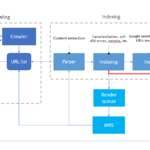Phospholipids in Depot Formulations: A Comprehensive Overview
Depot formulations are an advanced pharmaceutical technique designed to release active pharmaceutical ingredients (APIs) gradually over an extended period, improving drug efficacy, reducing dosing frequency, and enhancing patient compliance. Among the various components used in these formulations, phospholipids stand out due to their biocompatibility, safety, and ability to form stable and versatile drug delivery systems. In this comprehensive article, we delve into the role of phospholipids in depot formulations, exploring their mechanisms, applications, and potential to transform modern drug delivery systems.
What Are Depot Formulations?
Depot formulations refer to specialized drug delivery systems that allow a controlled and sustained release of medication over time. These formulations are particularly beneficial in treating chronic conditions, where constant drug levels are required for optimal therapeutic outcomes. Phospholipids, with their ability to self-assemble into various structures such as liposomes, gels, and emulsions, are widely used to create depot formulations for both lipophilic and hydrophilic drugs.
The key advantage of depot formulations lies in their ability to reduce the frequency of drug administration. This has a direct impact on improving patient adherence to treatment plans, reducing fluctuations in drug concentration, and minimizing side effects associated with peak drug levels.
Why Use Phospholipids in Depot Formulations?
Phospholipids are amphiphilic molecules, meaning they contain both hydrophilic (water-attracting) and lipophilic (fat-attracting) regions. This dual characteristic allows them to interact with a wide range of drug molecules, making them versatile excipients in depot formulations. The most commonly used phospholipids include phosphatidylcholine (PC) and phosphatidylglycerol (PG), which are derived from natural sources such as egg yolk or soybean.
The advantages of using phospholipids in depot formulations include:
Biocompatibility: Phospholipids are naturally occurring components of cell membranes, making them highly compatible with biological systems. This reduces the risk of immune reactions and other side effects.
Versatility: Phospholipids can be tailored to form various delivery systems, including liposomes, emulsions, and gels, allowing for flexibility in drug formulation.
Sustained Release: Phospholipid-based formulations allow for the encapsulation of drugs in a matrix that gradually breaks down, releasing the drug over days, weeks, or even months, depending on the formulation.
Targeted Delivery: Phospholipids can be used to create liposomal systems that target specific tissues, such as the lymphatic system or tumors, enhancing drug efficacy and reducing systemic side effects.
Types of Phospholipid-Based Depot Formulations
There are several types of depot formulations that utilize phospholipids to achieve sustained drug release:
-
Liposomal Depot Systems
Liposomes are spherical vesicles composed of phospholipid bilayers. They are capable of encapsulating both hydrophilic and lipophilic drugs, making them ideal for a wide range of therapeutic applications. In depot formulations, multivesicular liposomes (MVLs) are used to trap APIs within the vesicles. After subcutaneous or intramuscular injection, these liposomes remain at the site of administration, gradually releasing the drug into systemic circulation.
Mechanism: Multivesicular liposomes consist of multiple internal compartments within a single liposome. The slow degradation of the liposomal bilayer leads to the gradual release of the drug.
Applications: MVLs are used in various therapies, including cancer treatments, hormone regulation, and pain management. For example, DepoFoam™ technology uses multivesicular liposomes to encapsulate and slowly release drugs like bupivacaine for post-surgical pain relief.
-
Phospholipid Gels (PG-Depot™)
Phospholipid gels are another depot formulation that involves the in-situ formation of a gel matrix after injection. These gels, typically composed of high concentrations of phospholipids, are capable of entrapping small molecules, peptides, and proteins. The release of the drug is controlled by the breakdown of the gel matrix over time.
Mechanism: Upon injection, phospholipid gels form a semi-solid structure that traps the API. The drug is gradually released as the gel matrix dissolves in the body fluids. The release rate can be controlled by adjusting the phospholipid content or the type of phospholipid used.
Applications: PG-Depot™ technology has been developed for various therapeutic applications, including pain management, hormone replacement therapies, and chronic disease treatments. One key advantage of PG-Depot™ systems is that they can be administered using fine needles (up to 28G), making them suitable for autoinjector and pen injector devices.
-
Vesicular Phospholipid Gels (VPGs)
Vesicular Phospholipid Gels (VPGs) are composed of densely packed vesicles that create a gel-like structure capable of sustaining the release of encapsulated drugs. VPGs have gained attention for their ability to deliver large and small molecules, offering a depot effect for up to several weeks.
Mechanism: VPGs form a gel when dispersed in an aqueous medium, where vesicles act as reservoirs for the API. As the gel matrix breaks down, the vesicles release the drug in a controlled manner.
Applications: VPGs have been explored for use in protein and peptide therapeutics, offering a stable environment for biologics that require controlled release. They are particularly useful in conditions requiring long-term management, such as diabetes and hormone therapy.
Key Applications of Phospholipid-Based Depot Formulations
Phospholipid-based depot formulations are used across various therapeutic areas, providing targeted and sustained drug release. Some notable applications include:
-
Pain Management
Phospholipid-based depot formulations, such as Exparel®, are used to provide long-lasting pain relief after surgery. By encapsulating bupivacaine in phospholipids, the drug is released gradually at the surgical site, offering extended analgesia without the need for frequent dosing.
-
Hormone Replacement Therapy
Depot formulations are commonly used in hormone therapies, where maintaining steady hormone levels is critical. Phospholipid gels and liposomal systems can encapsulate hormones like testosterone or estrogen, allowing for slow release over weeks or months, improving patient compliance.
-
Opioid Addiction Treatment
Buprenorphine, used to treat opioid addiction, has been formulated as a depot injection (e.g., Buvidal®) with phospholipid excipients. This formulation provides sustained drug release over several weeks, helping patients manage withdrawal symptoms and reducing the risk of relapse.
-
Cancer Therapy
Liposomal formulations are widely used in cancer treatment to target tumors with chemotherapeutic agents. Phospholipids play a crucial role in creating liposomes that encapsulate cytotoxic drugs, reducing systemic toxicity and enhancing drug accumulation at the tumor site.
Advantages of Phospholipid-Based Depot Formulations
- Improved Drug Stability: Phospholipids protect sensitive drugs from degradation, increasing their stability in the body.
- Controlled Drug Release: By adjusting the phospholipid composition, depot formulations can be tailored to release drugs at a specific rate, ensuring therapeutic levels are maintained over time.
- Reduced Side Effects: The slow release of drugs from depot formulations minimizes peak drug concentrations, reducing the risk of side effects and toxicity.
- Enhanced Patient Compliance: Depot formulations reduce the frequency of drug administration, improving adherence to long-term therapies.
Future Trends in Phospholipid-Based Depot Technologies
The future of phospholipid-based depot formulations lies in the development of more sophisticated drug delivery systems, such as multicompartment vesicles, liposome-hydrogel hybrids, and hybrid polymer/liposome systems. These technologies aim to enhance the control over drug release, targeting specific tissues or cells with even greater precision.
In addition, ongoing research is exploring the use of phospholipids in gene therapy and immunotherapy, where long-acting delivery systems are critical for sustained therapeutic effects.
Conclusion
Phospholipids are integral to the development of depot formulations, offering a flexible, biocompatible platform for the sustained release of drugs. With their ability to form various structures, from liposomes to gels, phospholipids enable the creation of advanced drug delivery systems that improve patient outcomes and compliance. As research continues to push the boundaries of pharmaceutical technology, phospholipid-based depot formulations are set to play an even more prominent role in modern medicine.









